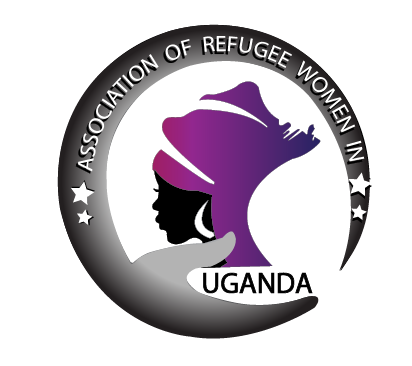


The life of a refugee is one of uncertainty due to the sudden change that comes with displacement due to war or natural disasters. This life comes with instability for adults more so for children. Racheal Kiti, a primary five pupil of Old Kampala Primary School, shares her story as a refugee, with a sunny smile.
“I once thought that my dreams were impossible to achieve, especially given the uncertainty of life as a refugee. Thankfully with the education scholarship that I received from AORW-U, I have found the key to unlocking a world of possibilities. I am constantly learning and growing. Every lesson I learn takes me one step closer to realizing my dreams and every challenge I face serves to strengthen my resolve. This scholarship gives me hope as a pupil, dreamer, and future leader despite being a refugee child’’.
So, who is a refugee? According to the United Nations High Commissioner for Refugees (UNHCR), a refugee is someone unable or unwilling to return to their country of origin owing to a well-founded fear of being persecuted for reasons of race, religion, nationality, membership of a particular social group or political opinion.
Uganda is one of the top refugee-hosting countries in Africa due to its friendly reputation. Uganda is known as the Pearl of Africa, with a moderate climate due to its nearness to the equator, unique environmental attributes, and hospitable people. According to UNHCR, by 31st December 2023, Uganda has 1,708,007 refugees and asylum seekers from different countries like the Democratic Republic of Congo (DRC), Rwanda, Burundi, Sudan, Somalia, Eritrea, Equatorial Guinea among others.
Uganda has progressive refugee policies and laws that reflect the country’s national, regional, and international obligations. According to UNHCR, the admission rate for refugees in Uganda is one of the highest in the world.
Uganda is the largest refugee-hosting country in Africa, with over a million refugees, most of them from South Sudan, the DRC, Burundi, and Somalia.
Refugees live in refugee settlements like Rhino camps, Rwamwanja camps, Imvepi camps, Bidibidi, Nakivale, and others where they are supposed to be self-reliant.
However, new evidence on refugee livelihoods in Kampala suggests that the rights to work and move freely, without fear, are often unmet in urban areas where these refugees live. According to UNHCR, close to 140,442 refugees currently reside in Uganda in the urban areas of Nakawa, Kawempe, Rubaga, Kisenyi, Nakulabye, Kansanga, and Makindye among others. The majority have fled conflict in the DRC and others are from Burundi, Rwanda, Eritrea, Somalia, and South Sudan. Uganda, aside from receiving a huge influx of refugees is hosting protracted refugees, who are staying for a period over five years. Part of the refugee population is rejecting refugee camps for urban centers.
Consequently, refugees living in urban centers face many challenges such as poor living conditions, poor health, unemployment, lack of educational support, and lack of social support. Although the Ugandan government has policies that recognize refugees living in camps, they do not fully recognize refugees living outside the camps. According to AORW-U findings, refugees in city center areas are not registered with UNHCR and are thus considered aliens. They do not receive protection or recognition from UNHCR nor do they receive direct or indirect assistance.

PHOTO CREDIT(Ndeze Veronique Sandra): A mother and her daughter, beneficiaries of AORW-U at their home in Kampala.
Below is a tabulation of the living conditions of refugees in urban areas.
Figure I: shows the living conditions of the sampled urban refugees.
Variable |
| frequency | Percentages |
Kasubi | 7 | 4.67 | |
currently live | Kawala | 7 | 4.67 |
Lugoba | 1 | 0.67 | |
Lusaze | 29 | 19.33 | |
Mengo | 13 | 8.67 | |
Nabulagala | 44 | 29.33 | |
Nakulabye | 43 | 28.67 | |
Namungoona | 2 | 1.33 | |
Wakaliga | 4 | 2.67 | |
Total | 150 | 100 | |
Water | No | 150 | 100 |
Total | 150 | 100 | |
Electricity | No | 150 | 100 |
Total | 150 | 100 | |
House affordability | No | 150 | 100 |
Total | 150 | 100 | |
Security | No | 150 | 100 |
Total | 150 | 100 |
The information presented in Figure 1 reveals the living standards of refugees. According to AORW-U’s survey results, out of the total of 150 refugees, 29% (44) reside in Nabulagala, 29% (43) in Nakulabye, 19% (29) in Usage, and 9% (13) in Mango.
The remaining refugees live in other areas such as Wakaliga, Namungoona, Kasubi, Kawaala, and Lugoba, with 3%, 1%, 5%, 5%, and 1% respectively.
The survey also found that none of the 150 refugees have access to water in their places of residence, particularly during the dry season.
They don’t have boreholes or tap water, and the tap water available is commonly owned by the locals who sell it to the refugees at a high cost. Additionally, all 150 refugees lack access to electricity.
The use of candles poses a significant risk of fire outbreaks, putting their lives in danger. The survey results show that none of the refugees can afford housing due to the high cost and there is no security at all.